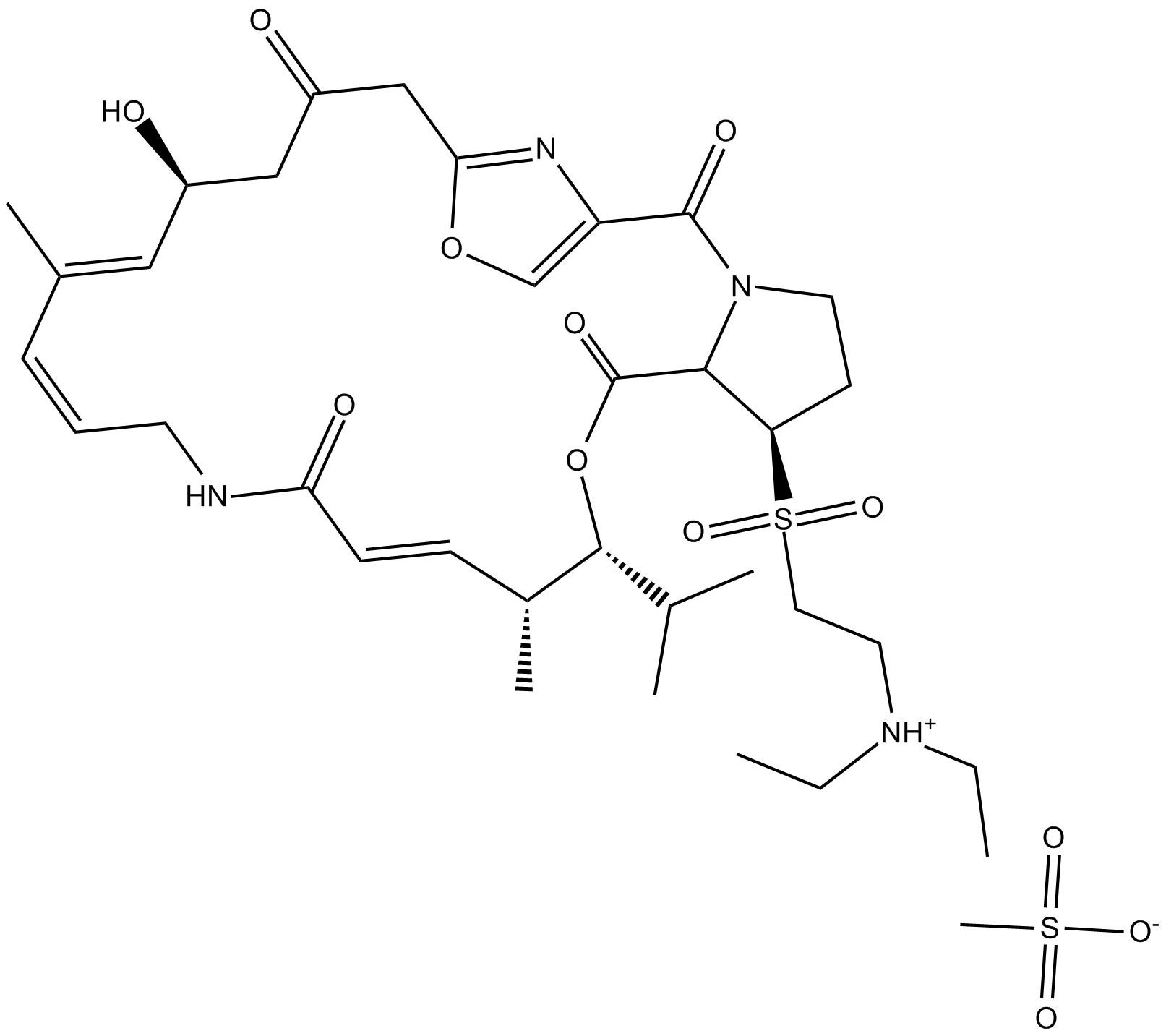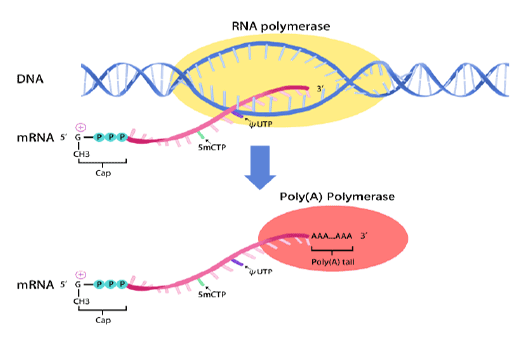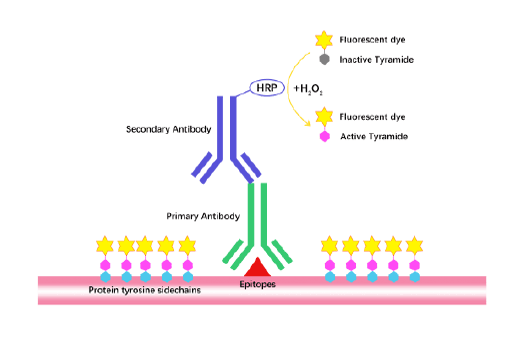Dalfopristin (mesylate)
Dalfopristin (mesylate) is a streptogramin antibiotic and a 50S ribosome inhibitor [1][2].
Streptogramins are produced by a variety of Streptomyces sp as a mixture (ratio of 7:3) of two chemically unrelated compounds, type A and B. Dalfopristin, the type A Streptogramin, is often combined with type B streptogramin antibiotic, quinupristin, to produce Quinupristin-Dalfopristin Complex, known commercially as Synercid. Synercid is used to treat skin infections, and is also active against some Gram-negative and anaerobic bacteria [2][3].
The ribosome is composed of two ribonucleoprotein subunits, the 50S and 30S. The 50S ribosome inhibitors inhibited protein synthesis [2].
Dalfopristin is a cyclic polyunsaturated macrolactone that interferes with binding of tRNA substrates to both A- and P-sites [2]. Dalfopristin blocked the access of peptidyl-tRNAs to the ribosome and peptidyltransferase elongation reaction in bacteria [1]. quinupristin and dalfopristin acted synergistically to kill Gram-positive bacteria, as well as some Gram-negative and anaerobic bacteria [2][3]. Dalfopristin hydrolyzed rapidly to virginiamycin M under physiological conditions.
References:
[1]. Kohanski MA, Dwyer DJ, Collins JJ. How antibiotics kill bacteria: from targets to networks. Nat Rev Microbiol. 2010 Jun;8(6):423-35.
[2]. Wilson DN. The A-Z of bacterial translation inhibitors. Crit Rev Biochem Mol Biol. 2009 Nov-Dec;44(6):393-433.
[3]. Noeske J, Huang J, Olivier NB, et al. Synergy of streptogramin antibiotics occurs independently of their effects on translation. Antimicrob Agents Chemother. 2014 Sep;58(9):5269-79.
| Physical Appearance | A solid |
| Storage | Store at -20°C |
| M.Wt | 787.0 |
| Cas No. | 112362-50-2 |
| Formula | C34H51N4O9S·CH3SO3 |
| Synonyms | RP 54476 |
| Solubility | Soluble in ethanol;methanol;DMSO;dimethyl formamide |
| Chemical Name | (3R,4R,5E,10E,12E,14S,26R,26aS)-26-[[2-(diethylamino)ethyl]sulfonyl]-8,9,14,15,24,25,26,26a-octahydro-14-hydroxy-4,12-dimethyl-3-(1-methylethyl)-3H-21,18-nitrilo-1H,22H-pyrrolo[2,1-c][1,8,4,19]dioxadiazacyclotetracosine-1,7,16,22(4H,17H)-tetrone, monometh |
| SDF | Download SDF |
| Canonical SMILES | O=C(/C=C/[C@@H](C)[C@@H](C(C)C)OC(C1N(CC[C@H]1S(CC[NH+](CC)CC)(=O)=O)C(C2=COC(C3)=N2)=O)=O)NC/C=C\C(C)=C\[C@@H](O)CC3=O.CS([O-])(=O)=O |
| Shipping Condition | Small Molecules with Blue Ice, Modified Nucleotides with Dry Ice. |
| General tips | We do not recommend long-term storage for the solution, please use it up soon. |
Quality Control & MSDS
- View current batch:
-
Purity = 98.00%
- COA (Certificate Of Analysis)
- MSDS (Material Safety Data Sheet)
Chemical structure









